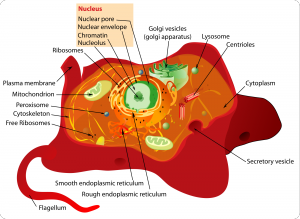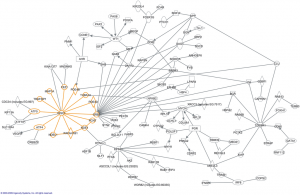SUNDAY, 27 MAY 2012
Systems biology is a fast emerging and enthralling multidisciplinary field, promising to deliver a complete understanding of life and a path to new and vastly improved disease treatment. Sounds good, right...but you’ve heard lines like this before?Systems biology is like building molecular jigsaws for biological processes. These jigsaws should depict our understanding of how systems, such as cells, function at the most basic level. However, these jigsaws aren’t your standard 1000 piece deal, and they’re certainly not two-dimensional. Pieces don’t just interact with their closest neighbours, but can change shape, connect with and influence any number of different and distant components, in interactions that can change over time. The picture we see once the jigsaw is complete is the result of these many varied interactions. The jigsaw’s pieces are genes and proteins, which work together within their cellular environment to form the incredible machines that are you, me, and every living thing. While considering life as a system might seem obvious, up until this century biologists have been largely preoccupied with the individual pieces.
Recently it has been suggested that the examination of the human genome sequence over the last ten years has not contributed to improving disease treatment. Why is that? Unfortunately we’ve come to think that “genes code for proteins”, and that if a protein does not do its job correctly we see disease. But in reality it’s just not that simple; additional complexity is frequently discovered. What we need is a system overview, to know exactly how genes interact to produce a distinct form or function. Now we are finally in a better position to get just that, where the reductionism of focusing on individual parts can give way to a holistic field in which biologists, physicists, chemists, engineers and computer scientists can integrate their knowledge to build the jigsaws necessary for the understanding of life. Systems biology means finally being able to ask: “How do biological systems give rise to normal physiology, and of course its ugly sister, disease pathology?”
Large-scale and efficient “high through-put” technologies are what have afforded us this opportunity. We can now look at the whole range of gene expression or variant proteins in a biological system. The terabytes of data generated can then be interpreted by computer technology to model, explain and predict the system’s behaviour, and by extension bring about a new level of understanding. This understanding is key for Professor Alfonso Martinez Arias of the Physics of Medicine Initiative at the University of Cambridge. “If we say something is complicated it is simply that we do not understand it yet”. He believes systems biology will require a combination of radical new ideas and, more importantly, adequate funding.
Cancer may well be the first disease to fall prey to the explanatory power of systems biology. Researchers like Dr Sui Huang at the University of Calgary have arrived at a seemingly straightforward account of the disease through an integrated systems biology approach. The premise of his work is that disruption of the complex self-organising gene networks that govern normal cell and tissue development can give rise to tumours. If we imagine development as a landscape across which cells must travel to mature, with peaks and valleys representing distinct cell types, disruption in the form of inappropriate environmental signals or gene mutations can result in cells becoming trapped in valleys they would not normally have access to, and cosequently developing into tumours. Only with this sort of systems-level understanding can we hope to gain a grip on cancer. In a recent issue of the biological journal Cell, it was suggested that network models of cancer will also be invaluable in determining drug responses. In fact it may be only a matter of time before we can partake in “personalised” medicine. Each person’s unique biology may be investigated and modelled to predict best practice for disease treatment. A bit Star-Trek? Yes. Possible? Probably.
The field is not without its problems. Some scientists, including Associate Professor of Systems Biology at Harvard Medical School, Jeremy Gunawardena, question whether we have the experimental technology, the intellectual imagination, and – to echo Professor Martinez Arias’ point – the necessary funding to bring it to fruition. “Yes I do believe systems biology is the way forward for reasons that have to do with the natural historical dynamic of biology, but having said that, I think we are a long way from having the conceptual framework needed to carry it through”.
So can systems biology deliver? Can we overcome the financial, technological and imaginative barriers and start to really understand systems biology? If “The Wire” has taught me anything it’s that public money should not be spent on short term gain. We should look to the future instead. As for the other barriers, science is never easy and little would be achieved if we surrendered to every obstacle. Not too long ago we wondered if we could ever unravel our own genetic code, but the published sequence is now a decade old. So it is with cautious optimism that I look forward to learning more about systems biology.
Aoife O’Shaughnessy is a final-year PhD student in the Wellcome Trust Centre for Stem Cell Research
Reference: Pe'er, D. and Hacohen, Nir. Principles and Strategies for Developing Network Models in Cancer. Cell 144: 864-873


